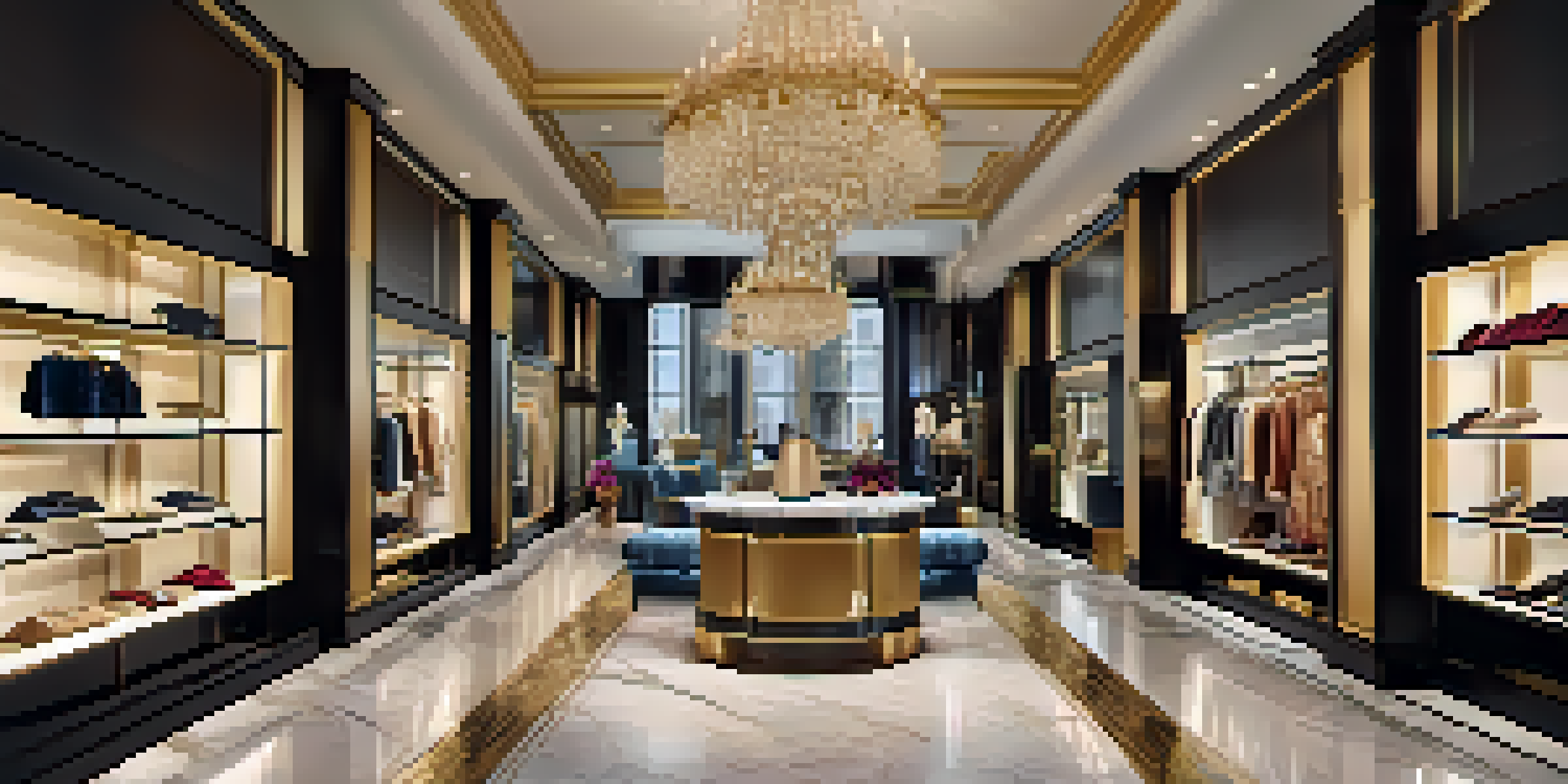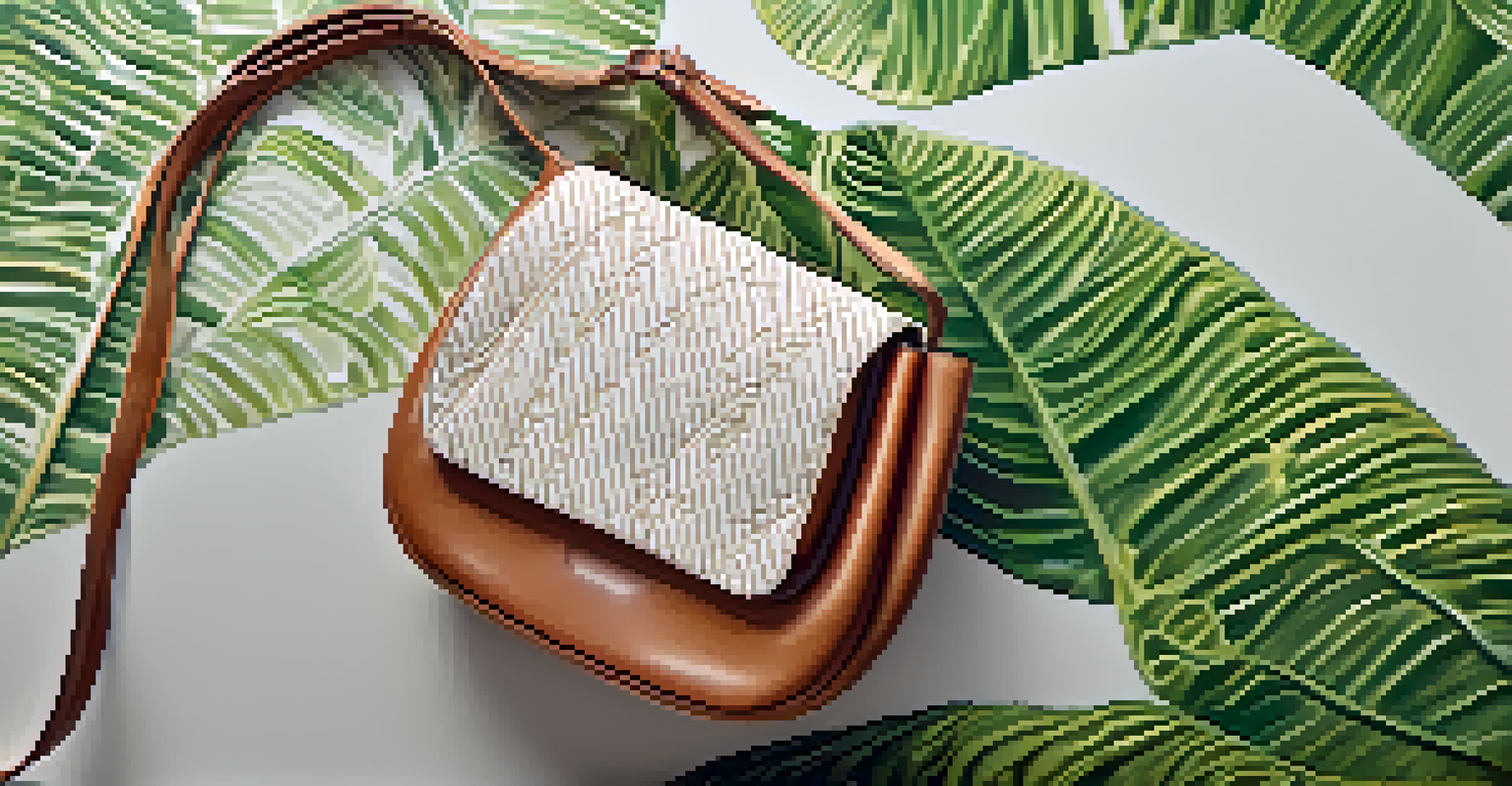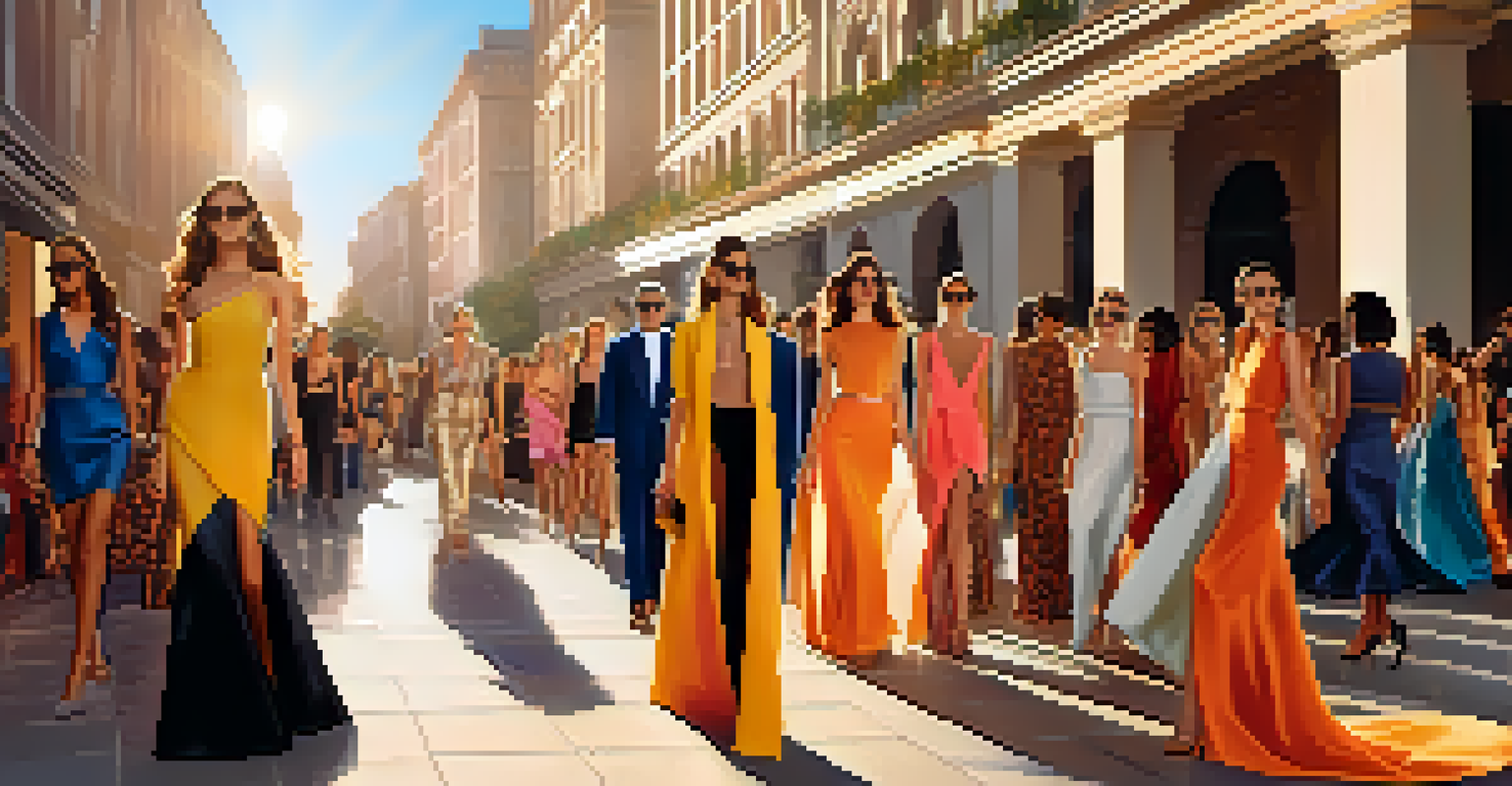Impact of Economic Factors on Luxury Fashion Trends

Understanding Luxury Fashion in Today's Economy
Luxury fashion is often viewed as a reflection of our economic climate. When the economy is thriving, consumers have more disposable income to indulge in high-end brands. However, during economic downturns, spending on luxury items typically declines, forcing brands to adapt their strategies.
Luxury is the ease of a t-shirt in a very expensive dress.
This dynamic relationship means that luxury brands must stay attuned to economic indicators like GDP growth, employment rates, and consumer confidence. For instance, when people feel secure in their jobs, they are more likely to splurge on designer handbags or bespoke clothing. Understanding this correlation is crucial for brands aiming to thrive.
Ultimately, the luxury fashion market is not immune to the ups and downs of the economy. Brands that recognize this interplay can adjust their offerings and marketing strategies to align with consumer sentiment and economic realities.
Consumer Behavior: The Luxury Shift
Economic factors significantly influence consumer behavior, particularly in the luxury sector. For example, during times of economic hardship, consumers may prioritize experiences over possessions, leading to a shift in luxury spending. This trend highlights the importance of understanding what drives luxury purchases.

As consumers become more conscious of their spending habits, brands have started to see a rise in demand for sustainable and ethically produced items. Shoppers are now more inclined to invest in a luxury item that aligns with their values, reflecting a broader societal shift toward responsible consumption.
Economic Factors Shape Luxury Trends
Luxury fashion brands must adapt their strategies based on economic indicators like consumer confidence and spending patterns.
This shift prompts luxury brands to innovate and adapt, offering products that resonate with a more socially aware customer base. By tapping into these evolving consumer preferences, brands can maintain relevance and appeal in a changing economic landscape.
Economic Downturns and Luxury Fashion
Economic downturns can have a profound impact on luxury fashion trends. When consumers face financial uncertainty, they often scale back their spending on high-end products, which can lead to a temporary decline in sales for luxury brands. For example, the 2008 financial crisis saw a notable dip in luxury retail performance.
Sustainability is no longer a trend; it’s a responsibility that brands must embrace.
However, it's interesting to note that some luxury brands manage to thrive even during challenging times. They often adopt strategies such as offering more accessible product lines or focusing on exclusive, limited-edition items that create a sense of urgency and desirability among consumers.
This adaptability not only helps brands weather economic storms but can also position them to emerge stronger when the economy recovers. Thus, understanding consumer psychology during downturns becomes essential for luxury fashion brands aiming to sustain their market presence.
The Role of Globalization in Luxury Fashion
Globalization has dramatically changed the luxury fashion landscape, allowing brands to reach new markets and consumers. Economic factors such as trade agreements and currency fluctuations impact how luxury brands strategize their global reach. For instance, a strong dollar can make luxury items more expensive for foreign buyers, influencing sales.
Additionally, emerging markets, particularly in Asia, have become significant players in the luxury sector. As these economies grow, the demand for luxury goods increases, prompting brands to tailor their marketing and product offerings to resonate with local consumers.
Sustainability Drives Consumer Choices
Today's luxury consumers increasingly prioritize sustainable and ethically produced items, influencing brand offerings.
This global perspective necessitates a keen understanding of diverse consumer behaviors and preferences, which are shaped by economic conditions unique to each region. By embracing globalization, luxury brands can tap into new opportunities and navigate the complexities of international markets.
Luxury Fashion and Economic Indicators
Economic indicators, such as inflation rates and consumer spending patterns, serve as vital signs for luxury fashion brands. High inflation can erode purchasing power, leading consumers to reevaluate their luxury spending. Brands must, therefore, pay close attention to these indicators to anticipate market shifts.
For instance, when consumer confidence is high, luxury brands often experience increased foot traffic and online sales. Conversely, a dip in consumer sentiment may push brands to adjust their pricing strategies or enhance marketing efforts to entice shoppers back.
Understanding these economic signals allows luxury brands to make informed decisions, ensuring they remain competitive and responsive to changing market conditions. This agility is crucial for sustaining growth in a fluctuating economy.
Sustainability as a Response to Economic Factors
In recent years, sustainability has emerged as a key economic factor influencing luxury fashion trends. As consumers become more environmentally conscious, luxury brands are increasingly expected to adopt sustainable practices. This shift is not just a trend; it reflects a broader economic movement toward responsible consumption.
Brands that prioritize sustainability can tap into a growing market of eco-conscious luxury consumers. For example, brands that use organic materials or promote ethical labor practices appeal not only to consumers' values but also to their desire for high-quality, unique products.
Globalization Expands Market Reach
Emerging markets and globalization allow luxury brands to tap into new consumer bases, necessitating tailored marketing strategies.
By aligning their brand identity with sustainability, luxury fashion houses can create a loyal customer base that values both luxury and ethical considerations. This dual focus can be a powerful driver of growth in today's economy.
The Future of Luxury Fashion Amid Economic Changes
As we look ahead, the future of luxury fashion will likely be shaped by ongoing economic changes. Brands will need to remain agile and innovative, adapting to shifting consumer preferences and economic realities. This might mean investing in technology, enhancing online shopping experiences, or exploring new markets.
Moreover, the rise of digital platforms and social media has transformed how consumers engage with luxury brands. Companies that effectively leverage these tools can capture a wider audience, making luxury fashion more accessible while still maintaining exclusivity.

Ultimately, the ability to respond to economic factors will determine which luxury brands thrive in the coming years. As the landscape evolves, staying in tune with consumer desires and economic trends will be essential for success.